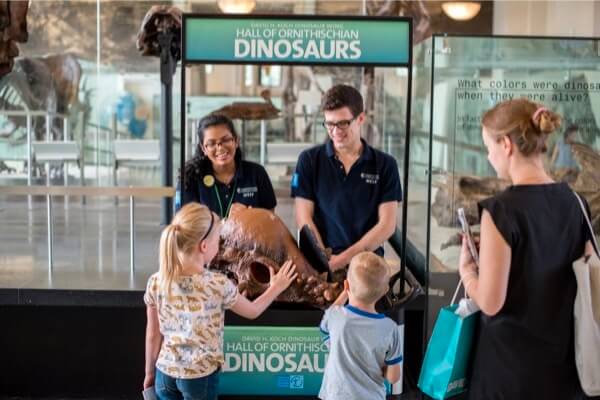By Merle Exit
For many kids, the summer that is about to end was a time to head for the beach or just relax. But for the 30 young people who participated in the Museum Education and Employment Program, the break between school years has been an opportunity to learn about museums and how they operate.
Samantha Wong, a 19-year-old from Elmhurst, is one of those young people. Wong, a junior majoring in biology at Hunter College, said MEEP offered her “the unique opportunity to not only build up on my past knowledge and communication skills but also gave me the chance to create a tour. I created a tour about animal communication, noise pollution and a little bit of sound physics.”
MEEP, which is run by the American Museum of Natural History, lets its participants explore both their scientific and artistic sides. In addition to helping them master the disciplines that are the museum’s focus, it also encourages them to creatively use all the media at the museum’s disposal to put together engaging and informative presentations.
As a child visiting the museum, Wong had fond memories of the whales sparking her interest in wanting to become a marine biologist “so that I could swim with all the magnificent animals that are displayed in the Hall of Ocean Life.”
Wong said that she was inspired by the World’s Science Festival, where she saw a presentation called the Flame Challenge, in which scientists were challenged to answer difficult questions put to them by 11-year-olds. “This year, the question was ‘What is sound?’ It seemed like an easy topic to grasp, but breaking down the big idea into smaller components in a way that is engaging became a harder topic to grasp.”
Wong was responsible for developing her tour, which she said “correlates with discovery, where we find a connection between exhibits, research, then present our findings. Communications play such a big part, because science cannot have its full impact if the findings are not shared.”
To prepare, she touched upon her experiences of touring with the museum’s staff observing their communication styles, enthusiasm, and knowledge. Specific classes were given and after drawing up the tour she first presented it to her peers and supervisors. “When it comes to giving tours now I think of each tour as a preparation for the next, trying to learn from each tour, reflection on what parts were effective. As a tour guide, I find myself observing my actions and thinking of what to improve. This is the design process: think, build, test, repeat.”
As a student, she is hoping to do research for biomedical engineering and become a teacher or museum educator. “If I decide to take the path of education, I want to find ways to incorporate informal teaching in a formal setting such as a classroom. I want to create an environment for discovery where students are self-motivated and have the space to ask questions and create. Choose the path of biomedical engineering I have gained experience with the scientific method. The museum not only covers topics related to biology in terms of adaptation, habitat and biodiversity but it teaches the process of discovery.”



































